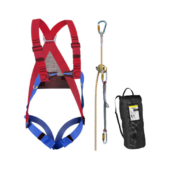People, processes, and materials must be coordinated for project success. A simple task like making a cake requires the appropriate tools and steps. As we’ve all done, you may choose a recipe and hope you have enough flour and sugar. If you have all the materials and tools beforehand, the process runs more smoothly. This defines project procurement management.
Project procurement management helps project managers and teams understand their procurement needs, automate contract management, and buy rapidly. It improves procurement management planning, waste reduction, and budgeting.
Learn how to create a project procurement plan in this article. It discusses planning and how simple tactics and instruments can improve project procurement management results.
Project Procurement Management Plan
Project procurement management involves purchasing and managing project resources, products, and services. A diverse procurement management approach guarantees stakeholders may access all needed resources at the best price and value.
Project procurement management tasks include:
- Identifying procurement management needs
- Requesting bids
- Vendor selection and evaluation
- Managing procurement contracts
- Managing material deliveries
- Manage and integrate inventory
- Spending analysis
- Purchasing and project reporting
Effective procurement management helps project managers meet budget and timing goals. Supply chain optimisation boosts operational efficiency and stakeholder satisfaction.
How to improve project procurement management efficiency?
Procurement management shows project timeline-affecting needs, purchases, and delivery. Financial and operational efficiency conserve corporate cash and allow employees to perform at their best. Many external hazards that delay project execution and blow budgets are reduced by procurement management.
The main motivations to use project management for project procurement are efficiency gains:
Reduce cost: Procurement management improves total value and per-unit pricing, lowering costs. Consolidating purchasing into fewer vendors unlocks volume discounts. It avoids costly shipment delays, quality difficulties, and third-party risk.
Better quality: Careful evaluation and vendor selection yield better materials and services. Top-line performance and project outcomes improve when the best goods are purchased at a competitive price.
Minimised delays: Delivery and quality delays can delay projects. High-quality suppliers decrease delays and difficulties, keeping the project scheduled and on budget.
Improved resource allocation: Just-in-time (JIT) inventory management and allocation ensure goods arrive on time. Waste, shortages, and warehousing issues are eliminated by resource optimisation.
Project flexibility: Effective project procurement management procedures find diverse sources for important goods and services, increasing project flexibility. They prevent backorders, decrease vendor dependence, and redundancy mission-critical commodities.
Vendor partnerships: Good project procurement management plans incorporate strong supplier relationships. These collaborations provide better service, reliability, and negotiating for future projects than transactional supply contracts with several providers. Comprehensive vendor analysis helps quantify vendor relationships and identify strategic sourcing candidates.
Compliance: Good procurement methods help projects meet legal and regulatory requirements. Procurement analysis and vendor performance monitoring are possible with correct reporting.
Successful procurement management strategy steps
Simple project procurement management strategies work best. A few actions and attention to data and details can alleviate the most common procurement difficulties and assure timely delivery of materials and deliverables.
1. Determine project scope
The first step in procurement management is to clearly understand the project goals and expected outcomes. Since completing the project involves acquiring complex materials and supplies, it’s crucial to include purchase timelines in your plan. You should also prioritize factors like delivery speed, cost, contract terms, and product quality when managing these materials.
Having a clear grasp of the project will help in creating a procurement plan and prioritizing necessary items. Procurement planners often use Kraljic matrices to evaluate the impact of different supply categories.
2. Schedule milestones and purchases.
For large projects, regular purchasing ensures materials are available without affecting storage or cash flow. Procurement project managers must create specific schedules for milestones, project phases, and deliverable dates. This plan coordinates procurement and supply.
A complete purchase timeline should include all procurement dates. Purchase orders, delivery dates, and buffers for delays are included. Effective deadlines include supplier lead times and project lifecycle contingencies to minimise procurement bottlenecks and delays.
3. Find champions and stakeholders
Every project has leaders and stakeholders who facilitate procurement. They could be project managers, the team, vendors, or end users. The procurement team may adapt communication methods, create collaboration, build approval protocols, and verify decisions meet project needs by identifying such personnel. Early and frequent stakeholder engagement reduces risk and boosts project support.
4. Establish vendor assessment criteria.
Successful procurement project management requires vendors to meet the organization’s quality, reliability, and cost-effectiveness standards. Setting clear norms for these features allows objective supplier comparison. A vendor scorecard or criterion framework can help procurement assess vendor history, financial stability, delivery deadlines, product or service quality, and customer service. It simplifies vendor selection and builds long-term partnerships to increase procurement efficiency and effectiveness.
5. Establish bid and purchase procedures
The procurement project manager can explain the bidding processes and purchase protocols after establishing supplier selection criteria. A transparent bid and buy procedure encourages competitive pricing, vendor selection fairness, and explicit selection criteria.
Building a bid-and-buy procedure may involve:
- RFP preparation
- Evaluation of proposals using specified criteria
- Dealing with chosen vendors
- Contract completion and execution
The procurement management cycle is more efficient, cheaper, and more reliable with a systematic bid collection and protocol creation.
6. Create an approval process
A structured procurement request approval procedure streamlines and reduces delays. A good approval workflow defines decision-maker hierarchy and expense thresholds. It ensures all purchases follow purchasing policies and stay below budget. Digital permission monitoring gives greater transparency and accountability than manual techniques.
7. Monitor KPIs
Key performance indicators assist evaluate project procurement management plans. Tracking many indicators may help depending on project aims.
Choose KPIs that monitor cost, delivery speed, performance, and compliance, such as:
- Cost-saving
- Cost avoidance
- Delivery costs
- Cost of invoice processing
- On-time delivery
- Rate of delivery exceptions
- Injury rates
- Performance of suppliers
- Contract compliance
Tracking these metrics helps project managers and teams optimise procurement procedures, make informed decisions, and reduce costs and improve success. It guarantees projects are under budget and perform well.
3 Strategies for project procurement management success
The correct approach is key to procurement management project success. It aligns stakeholders, conveys policies and requirements, and specifies process parameters. Best practices for procurement plan preparation help simplify the process for everyone.
Start with a solid procurement policy: A well-defined procurement management policy helps maintain purchasing efficiency and cost limits. Establish adequate requisition channels to construct a good procurement policy. Document the criteria for requesting items and approving purchases for all staff. Then, determine how to approve request levels by project priority, dollar value, terms, or other criteria. Establish effective communication channels to inform stakeholders of the process and expectations.
Eliminate manual processes: Manual procurement processes must be eliminated to improve efficiency, accuracy, and transparency. Manual methods are slow and error-prone. They are unscalable and make complex project management difficult. Organisations save time, eliminate errors, and focus on strategic tasks by automating procurement. This ensures project success, cost efficiency, and definable goals.
Automate procurement systems: Platforms boost procurement visibility. Centralised platforms enable guided procurement, real-time order and expense tracking, budgeting control, and spend management. They automatically enforce rules and workflows to promote procurement policy compliance.

















